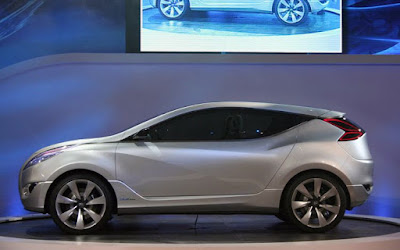




Built by Nissan's Specialty Vehicles Group with the help of Autech Japan, Nissan's longtime conversion partner, project engineers focused their efforts on making the new 2009 Nissan Nismo 370Z more aggressive in just about every aspect. First off, it looks the part. Its race-car-like body kit fits the stock lines well and produces more downforce at speed, officials say. Look closely at its nose and the integrated canard design on each side becomes evident. Although it has the same wheelbase as the stock 370Z at 100.4 in., the Nismo model is some 7-in. longer (167.2 in. stock vs. 174.3 in. Nismo) overall and slightly narrower (72.8 in. stock vs. 72.6 in. Nismo). Matching the kit's racer attitude on each corner are a set of wider, edition-specific lightweight five-spoke 19-in. Rays Japan alloys. The car's Nismo sport brakes (the same binders as on the 370Z Sport Package) at 14 in. front/13.8 in. rear, hide behind the forged rollers.
Speaking of corners, the Nismo Z is poised to attack all types of bends in full force thanks to a sturdier suspension setup. Engineers managed to tighten up the spring rates by 15% and 10%, front and rear, respectively, and chassis bars by 15% (front) and 50% (rear). Yes, 50%. The Nismo Z's complete stiffness rate is up an impressive 15% overall, according to Nissan.
Speaking of corners, the Nismo Z is poised to attack all types of bends in full force thanks to a sturdier suspension setup. Engineers managed to tighten up the spring rates by 15% and 10%, front and rear, respectively, and chassis bars by 15% (front) and 50% (rear). Yes, 50%. The Nismo Z's complete stiffness rate is up an impressive 15% overall, according to Nissan.





















